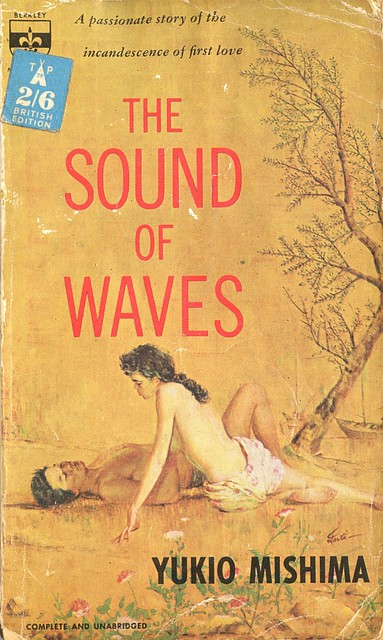The most
prominent example of intertextuality
that comes to my mind is the likeness between The Sound of Waves by Yukio Mishima, and William Shakespeare’s Romeo and Juliet. Both deal with
star-crossed lovers who are fated to be together, but are denied to be together by their
families. The Sound of Waves was
published in 1954 in Japan, and since it is not a western novel the degree to which
Mishima purposely borrowed from Shakespeare can be left up to debate. However, knowing the story of Romeo and Juliet
was of great importance and truly was helpful.
 |
| Taken from flickr.com |
The persistent theme of young
love leading young people to do rash things plays an ever-important part in
each story. The greatest difference in each story lies in the endings. Shinji,
the Romeo of the story, is allowed to prove his worth to Hatsue’s father, the
Juliet of the story. This does not change the fact that both families are at
odds against each other, but for reasons of class and honor, not an age old clash of clans. The primary difference is not
that they’re two warring families but that one is wealthy and the other is poor. The commonality between Romeo and
Juliet and The Sound of Waves is
helpful because The Sound of Waves,
being a Japanese romance story, has some themes that are not as relatable for someone who grew up in Western culture. The idea of honor between families is not a
common topic in western literature, but being able to relate it to the blood
feud that persisted between the Montague’s and Capulet’s allowed for a greater
understanding of not only the story but the culture of Japan.
Finally Shinji
proving his love for Hatsue is quite different from Romeo’s tactics. He
continually shows his strength and ability as a fisherman to win her over while
Romeo is, well, Romeo. This difference in tactics may be substantial but
understanding how much Romeo loved Juliet and his ability to articulate it
allowed for a greater understanding of what Shinji showed with his brawn. The
similarities between The Sound of Waves
and Romeo and Juliet allow for a
greater understanding of each.
I think this was a good example of intertextuality, especially since everyone else who brought up Romeo and Juliet brought up West Side Story. You say how the "persistent them of young love leading young people to do rash things" is a crucial theme in both works but you never mentioned those rash decisions made by the young lovers in the Sound of Waves. Were they rash about falling in love with each other? Other then that, great post.
ReplyDelete